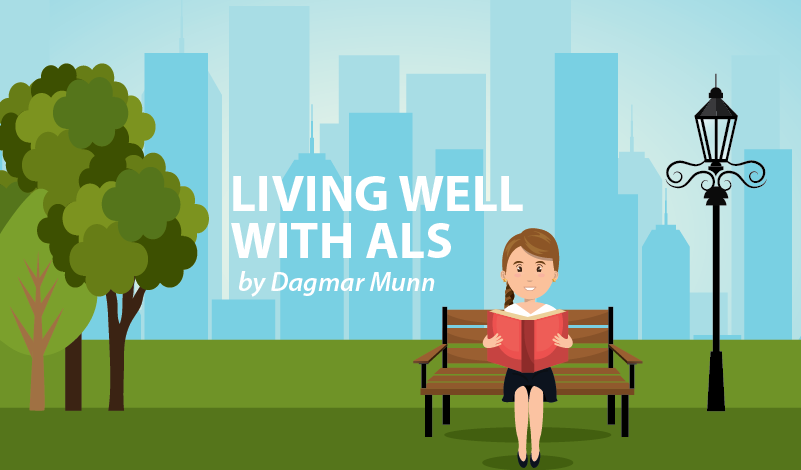Learning How to Speak (and Breathe) with Ease

Last month, I read a blog post from the ALS Association that made me sit up and pay attention. It told the story of a woman with ALS-related voice issues who learned specific vocal techniques normally utilized by actors to extend her ability to speak without assistive devices.
I, too, have ALS-related dysarthria and have shared in this column my own varied success using both voice-activated devices and other assistive devices. I also know that for those with ALS dysarthria, it is standard practice not to attempt to rehabilitate the voice with traditional voice exercises. The tongue and muscles of throat simply fatigue and wear out faster. So, this new work-around that held the potential for me to extend the use of my natural voice had me diving in to learn more.
A story within a story
I encourage you to read the original ALS Association blog post for the full explanation of this incredible story within a story and access the helpful links. However, I will do my best to summarize key points and events for you here.
In 2014, Terry Fiset, a retired attorney, experienced trouble speaking and sought the help of a voice, speech, and accent specialist. She met with Andrea Caban, head of voice and speech at the Department of Theatre Arts at California State University, Long Beach (CSULB).
Andrea’s initial suggestions for Terry to adjust her breathing, posture, and articulation helped, but Terry soon learned that the cause of her symptoms was due to ALS.
Andrea had no prior experience working with ALS patients, but her intuition led her to teach Terry to speak with a modified accent. It sounded different from Terry’s original voice, did not seem to strain her throat muscles and most importantly, Terry could be understood by others.
In 2015, inspired by Terry’s story, Andrea created “The Voice Bank,” a one-woman show that shares highlights of their sessions together and Terry’s fight to keep speaking. Last December, a special benefit performance of “The Voice Bank” was live-streamed and made available on YouTube.
A realistic performance
Over the years, we’ve all seen Hollywood actors attempting to portray ALS. In my opinion, no one seems to get it right. But Andrea Caban’s excellent performance resonated with me. From embodying the anguish of being diagnosed, to frustrations with the medical system, to the resolve to retain a sense of self — she nailed it!
Watching the video also gives us a sneak peek into Andrea’s unique and innovative teaching style and her techniques. What’s most surprising to learn is that many of her suggestions — using breath work, a change in pitch, and adopting an accent — are well-established strategies for patients with other conditions. Patients having throat cancer, larynx surgery, or a lung disorder are among those who regularly receive supplemental voice training.
Why not ALS? Well, simply put, there hasn’t been any research to date to prove it helps ALS patients. And without the clinical proof, speech and language pathologists are hesitant to endorse its use.
Fortunately, in order to help correct this omission, Andrea has received a research appointment with the Department of Neurology at the UC Irvine Medical Center. She is currently partnering with the medical center to develop a pilot study based on her methods.
For those of us who don’t want to wait until all the research is finished, Andrea’s integrative online course, “The Living Speech Series,” is available for purchase via her website. The four-week online course consists of six instructional videos with a 15-page detailed study guide.
Spread the word
It can often take more than several years for a novel idea to finally become a staple in the professional’s toolkit. Years are not a luxury shared by those living with ALS. Let’s not only take advantage of new innovative solutions that come our way but help spread the news. Or, in this case — spread the word!
Together, we can learn how to live well while living with ALS.
***
Note: ALS News Today is strictly a news and information website about the disease. It does not provide medical advice, diagnosis, or treatment. This content is not intended to be a substitute for professional medical advice, diagnosis, or treatment. Always seek the advice of your physician or other qualified health provider with any questions you may have regarding a medical condition. Never disregard professional medical advice or delay in seeking it because of something you have read on this website. The opinions expressed in this column are not those of ALS News Today or its parent company, Bionews Services, and are intended to spark discussion about issues pertaining to ALS.








Leave a comment
Fill in the required fields to post. Your email address will not be published.